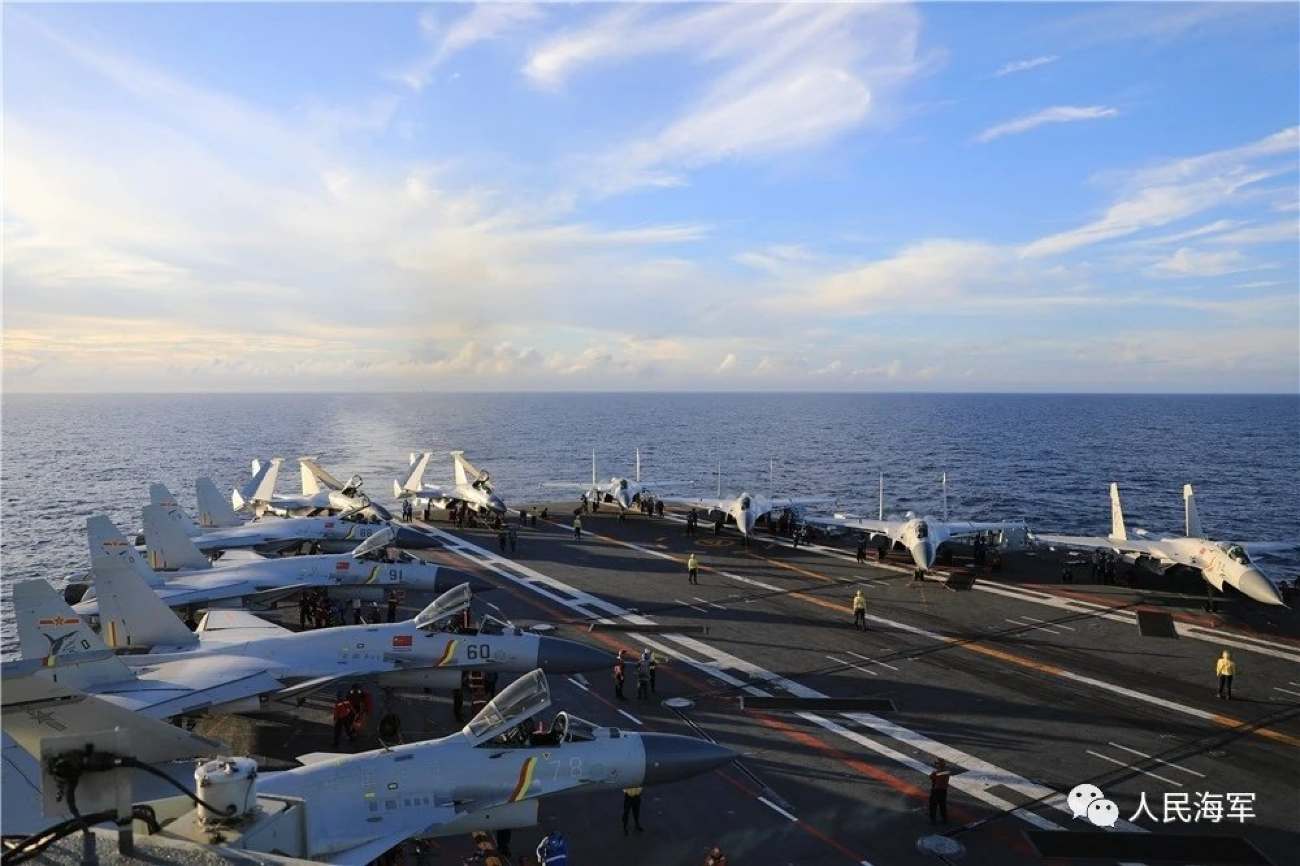China’s long-range missiles and bombers that can attack land targets are a greater threat to Taiwan rather than its aircraft carriers, according to Taiwan’s former Chief of General Staff (CGS), Admiral Lee Hsi-ming (Li Ximing).
Germany ‘Shocked’ By Leopard-2 Casualties, Wants To Retreat! Russian Media Goes Ballistic Over MBTs ‘Debacle’
Lee, speaking at an event by the Taipei School of Political Science Foundation (TSEF), added that the reach of China’s bombers, missiles, and submarines already covers the entire country, representing the decisive military edge.
China’s goal behind developing carriers is to “dominate the world and challenge the world order led by the United States,” Lee added.
Lee’s assessment has probably been influenced by China’s last year’s angry live-fire drills around Taiwan following then-US Speaker Nancy Pelosi’s visit, which witnessed a lot of firsts in the country’s military preparations for a military recourse to take the island.
This included Chinese missiles going over the island and landing on its eastern coast, simultaneous live fire drills at six locations around the island, and the use of advanced platforms like the J-20 stealth fighter.
Maverick Military Mind
Interestingly, this is not Lee’s first unorthodox take on China-Taiwan military affairs. His Overall Defense Concept (ODC) paper suggested an unconventional approach to withstand China’s overwhelming military superiority.
Recommending Taiwan use masses of multipurpose low-cost naval, aerial drones, precision-guided missiles, fast-attack craft, missile boats, mine-layers, and diverse anti-air weaponry, it envisaged the island nation fighting a prolonged war at a strategic level in a multi-layered campaign of attrition.

When Missiles Flew Over Taiwan For The First Time
On August 4, during China’s unprecedented live-fire drills around the island following former US Speaker Nancy Pelosi’s visit, Taiwan said 11 Dongfeng (DF) missiles were fired at the waters north, south, and east of the island from the Chinese side.
The Chinese missiles flew over Taiwan Island for the first time, a Chinese military expert, Major General Meng Xiangcing, said on the state television channel CCTV that day, according to CNN. This represented a significant escalation of China’s military intimidation against Taiwan.
“We hit the targets under the observation of the US Aegis combat system, which means the Chinese military has solved the difficulties of hitting long-range targets on waters,” Meng said on CCTV. “The exercises are unprecedented as the PLA conventional missiles are expected to fly over the island of Taiwan for the first time,” the Global Times had said.
One of these is believed to be the DF-17 hypersonic missile. Lee identified the other Chinese missiles as the DF-21D and DF-26, which pose a particular threat to Taiwan.
China’s state media also outlined a broad range of military objectives that its forces would have to achieve in actual combat proficiently. “The exercises (are) focused on key training sessions including joint blockade, sea target assault, strike on ground targets and airspace control operation, and the joint combat capabilities of the troops got tested in the military operations,” said an announcement from the Xinhua news agency attributed to the People’s Liberation Army’s (PLA) Eastern Theater Command, responsible for Taiwan.
‘Carriers To Challenge US, Show Might, Not Attack Taiwan’
China presently has two aircraft carriers, the Liaoning and the Shandong, with a third one, the Fujian, nearing completion. Lee disagreed with some analysts that China could blockade and prevent aid from reaching Taiwan by anchoring a carrier each north, east, and south of the country.

He believes the carriers would be useless for China in a Taiwan scenario, as they would not be able to withstand attacks by the US military. Lee pointed out that the CCP once said, “The strength of the navy lies where the national interests lie.”
“Therefore, the CCP needs force projection, and the CCP, the One Belt One Road (OBOR), etc. are all part of the global strategy, so the CCP’s development of aircraft ships has its long-range goals,” he was quoted in CNA.
The Republic of China National Defense Assessment report released at the TSEF event also emphasized the importance of cybersecurity and countering ‘gray zone tactics,’ hostile actions that stop short of outright warfare.
Lee said if the ‘gray zone’ is enlarged without limit, and more fighters and ships are purchased to deal with it, it will seriously deplete the allocation of military resources and disrupt the priority order. In his ODC, he also advises against spending on capital and bigger weapons platforms like fighter jets, tanks, and howitzers for monetary purposes of less military utility.
Gray Zone Warfare – Encircle & Scare But Not Fight
Gray zone warfare involves encircling and increasing pressure on the enemy using overwhelming military force that instills the fear of escalation and deterrence, dithering them from resorting to kinetic attacks and preventing actual war. This helps China attain many of its tactical and semi-strategic objectives without resorting to combat.
Lee’s take also aligns with other previous analyses that have noted this Chinese approach, common across the South China Sea (SCS), Taiwan Strait, and even Ladakh, where it has territorial disputes.
John Culver, former US National Intelligence Officer for East Asia, believes that China respects the “will to fight and maintain a posture for a long time in an adversary.” “Rather than invade Taiwan, it would take advantage of the psychological impact on Taiwan to press for negotiations,” Culver said in an article in The Interpreter.
- The author can be reached at satamp@gmail.com
- Follow EurAsian Times on Google News




